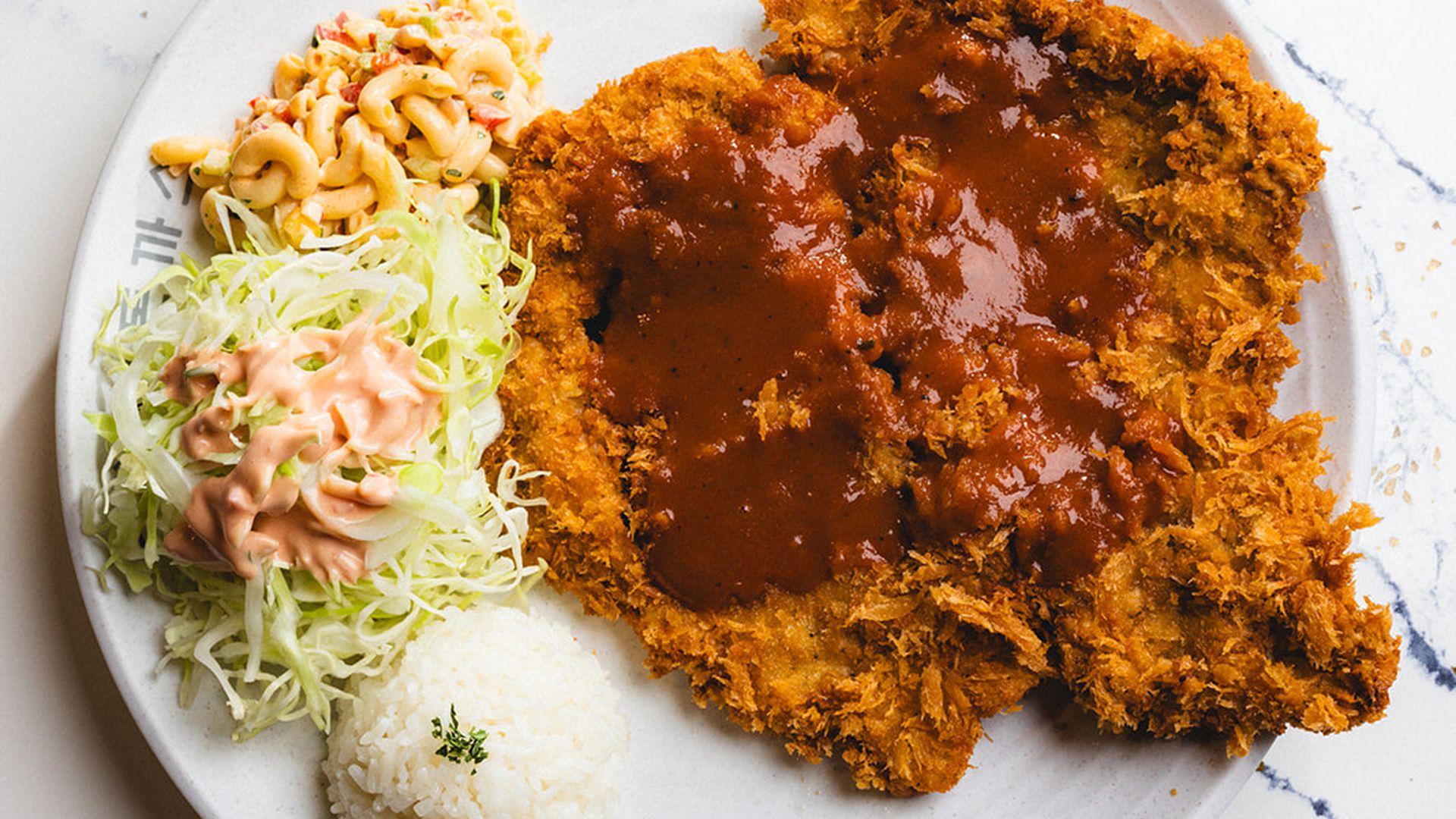
KOREATOWN’S NEW DONKATSU RESTAURANT SELLS HUNDREDS OF GIANT PORK CUTLETS A DAY
One after another, giant pork cutlets come streaming out of the kitchen at Koreatown’s new sit-down donkatsu restaurant, Lasung House. It’s the latest opening from hospitality group On6thAvenue, which also runs Korean barbecue hotspots Quarters and Origin in Chapman Market. Served pounded thin, and crispy with frizzled edges, these eight-or-so-inch long cutlets almost extend past the edges of the plates meant to carry them.
Fried pork cutlets were first introduced in Korea while it was under Japanese occupation in the 1930s. The first Japanese iteration was born from French influence during the Meiji Period, which spanned from 1868 to 1912. The dish was based on côtelette de veau, a breaded and fried piece of veal, which the Japanese reinterpreted as tonkatsu. When tonkatsu came to South Korea, it didn’t immediately catch on since pork and breading ingredients were expensive in the post-war era. At first, it was seen as a luxury meal before growing in demand as ingredients became more accessible in the 1970s as the South Korean economy developed. During the 1980s, the jumbo cutlets experienced a wave of popularity in Korea as they became an option for a nice night out. In contrast to most Korean meat dishes that were served with chopsticks, these were served Western-style with a fork and knife.
Though Korean donkatsu sprung from Japanese tonkatsu, it has become entirely its own dish over the years. The Japanese version is often served with a thick curry-based sauce or tonkatsu sauce, while the Korean-style cutlet served at Lasung is much thinner, with a slightly sweet tomato-based sauce on top. The Korean style of the dish has been popularized in Los Angeles at restaurants including Wako Donkasu, which has solidified itself as a long-standing favorite, even garnering acclaim from the late critic Jonathan Gold. On the side, rice, cabbage salad, and mac salad are all arranged into neat piles. In addition to the classic pork version, the cutlet is also available with mozzarella cheese on top or as a chicken or fish cutlet made with pollack.
While most of the menu is focused on the different cutlets, Lasung also offers a full lineup of side dishes to accompany the meal. Try the jjolmyeon, which are chewy cold spicy noodles served in a gochujang sauce with sliced vegetables, or a hearty Korean take on ragu spaghetti. For a non-spicy option, order the cold naengmyeon, which pairs well with sikhye, a sweet rice drink often sold in Korean street markets or at the end of meals.
So far, the response to Lasung has been astounding, with the restaurant selling out of its jumbo cutlets after the dinner rush every day. Currently, the restaurant can serve around 200 cutlets daily, but that number is set to rise later this week. While the restaurant has had its doors open since April 1, it will reopen Tuesday, April 16, after a one-day pause on April 15. Going forward, Lasung will be open seven days a week and will eventually sell frozen cutlets to prepare at home.
Lasung House is located at 3134 W Olympic Blvd, Los Angeles, CA 90006. It operates from 11 a.m. to 9 p.m. on Monday through Saturday, and 12 p.m. to 9 p.m. on Sunday.